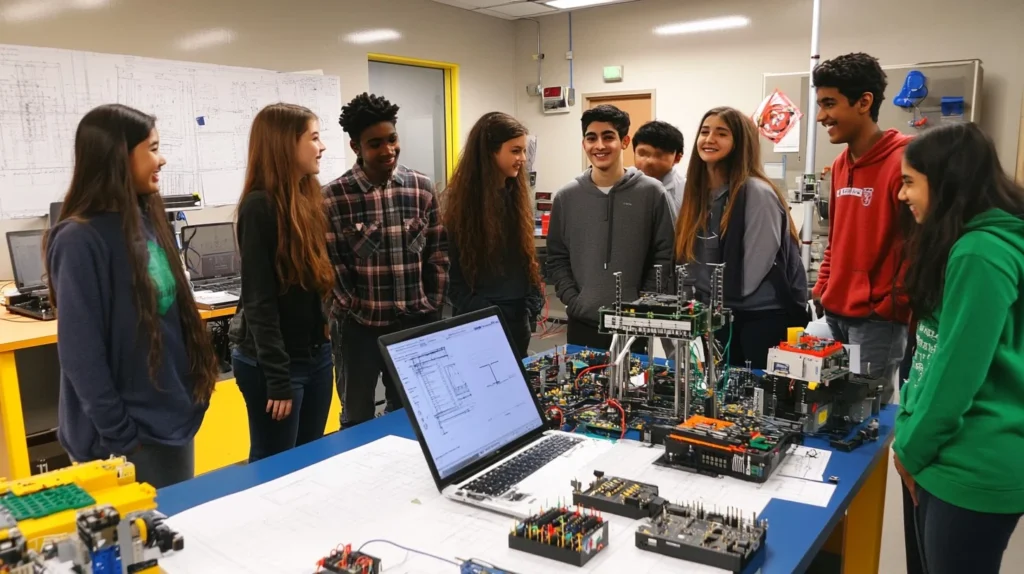The education landscape in Tier-1 countries is evolving rapidly, driven by digital innovations and shifting learner preferences. Hybrid and online learning models have emerged as powerful tools, offering flexibility and accessibility that traditional classrooms struggle to match. Whether you’re an educator, student, or policymaker, understanding the pros and cons of these models—and how to optimize them—is vital for success in today’s digital age.
What Are Hybrid and Online Learning?
Hybrid learning combines face-to-face classroom instruction with online components, blending the best of both worlds. Students may attend in-person classes part of the week and complete assignments or lessons online during other times.
Online learning, on the other hand, happens entirely in a digital environment, with no physical classroom meetings. It often uses Learning Management Systems (LMS), video lectures, interactive quizzes, and collaborative tools to engage students virtually.
Both models have seen accelerated adoption in Tier-1 countries due to technological infrastructure, increased internet penetration, and changing educational demands.
The Pros of Hybrid and Online Learning in Tier-1 Countries
Flexibility and Convenience
One of the biggest advantages is flexibility. Students and educators can engage with course material anytime and anywhere, accommodating varied schedules, learning paces, and commitments such as jobs or family.
Personalized Learning Experiences
These models facilitate tailored learning paths. With data analytics and adaptive learning technologies, educators can identify individual student strengths and weaknesses and customize content accordingly.
Access to Diverse Resources and Experts
Online platforms provide instant access to vast educational resources—from e-books and videos to expert guest lectures—enhancing the learning experience beyond what a traditional classroom can offer.
Cost-Effectiveness
Although initial setup can be costly, hybrid and online learning reduce long-term expenses related to commuting, physical infrastructure, and printed materials.
Enhanced Engagement with Innovative Tools
Interactive tools like discussion boards, polls, and gamification elements help keep students motivated and encourage active participation in a digital setting.
The Cons of Hybrid and Online Learning
Digital Divide and Accessibility Issues
Despite technological advances in Tier-1 countries, some learners still face challenges such as unreliable internet, lack of devices, or limited digital literacy, which can hinder their participation.
Reduced Social Interaction
Online and hybrid models can limit face-to-face peer interaction and spontaneous collaboration, which are crucial components for developing communication and teamwork skills.
Self-Motivation and Time Management Challenges
Without the structured environment of traditional schooling, some students struggle to stay motivated and manage their time effectively in virtual settings.
Technological Glitches and Learning Curve
Technical problems, software bugs, and the need to master new tools can disrupt learning and frustrate both students and teachers.
Teacher Training and Preparedness
Effective hybrid and online teaching require distinct skills. Many educators need ongoing professional development to design meaningful virtual lessons and support students remotely.
Best Practices for Implementing Hybrid and Online Learning
Invest in Robust Technology Infrastructure
Ensure reliable internet access, user-friendly software, and devices that support seamless connectivity for all participants. This forms the foundation of a positive learning experience.
Prioritize Teacher Training and Support
Continuous professional development helps educators adapt to new technologies and pedagogies. Encourage collaboration among teachers to share best practices for virtual classrooms.
Foster Interaction and Community
Create opportunities for meaningful social engagement through discussion forums, group projects, and live sessions. This helps build a sense of community and belonging.
Design Flexible Yet Structured Schedules
Balance freedom with routine by combining synchronous (live) and asynchronous (on-demand) learning activities. Clear deadlines and expectations help students stay on track.
Use Data and Feedback to Improve
Leverage analytics to monitor student progress and adjust teaching strategies. Regularly solicit feedback from learners to enhance course design and address challenges.
Promote Digital Literacy and Accessibility
Incorporate digital skills training into the curriculum and provide resources to assist students and educators in overcoming technical barriers.
Future Outlook: Education in Tier-1 Countries
As technology continues to evolve, hybrid and online learning will increasingly become integral to education in Tier-1 countries. Innovations such as AI-driven personalized learning, virtual and augmented reality, and advanced collaboration platforms promise to make these models more immersive and effective.
Educators and institutions that embrace these changes proactively, balancing technological advancements with human connection, will lead the way in shaping an inclusive, adaptable, and high-quality learning environment for all.
Conclusion
Hybrid and online learning offer exciting opportunities and notable challenges for education in Tier-1 countries. By understanding the strengths and limitations of these models and implementing thoughtful best practices, stakeholders can create enriching, flexible, and equitable experiences that prepare learners for a dynamic future.
Ready to transform your learning or teaching experience with hybrid and online education? Embrace these models today to unlock new possibilities in your educational journey!






